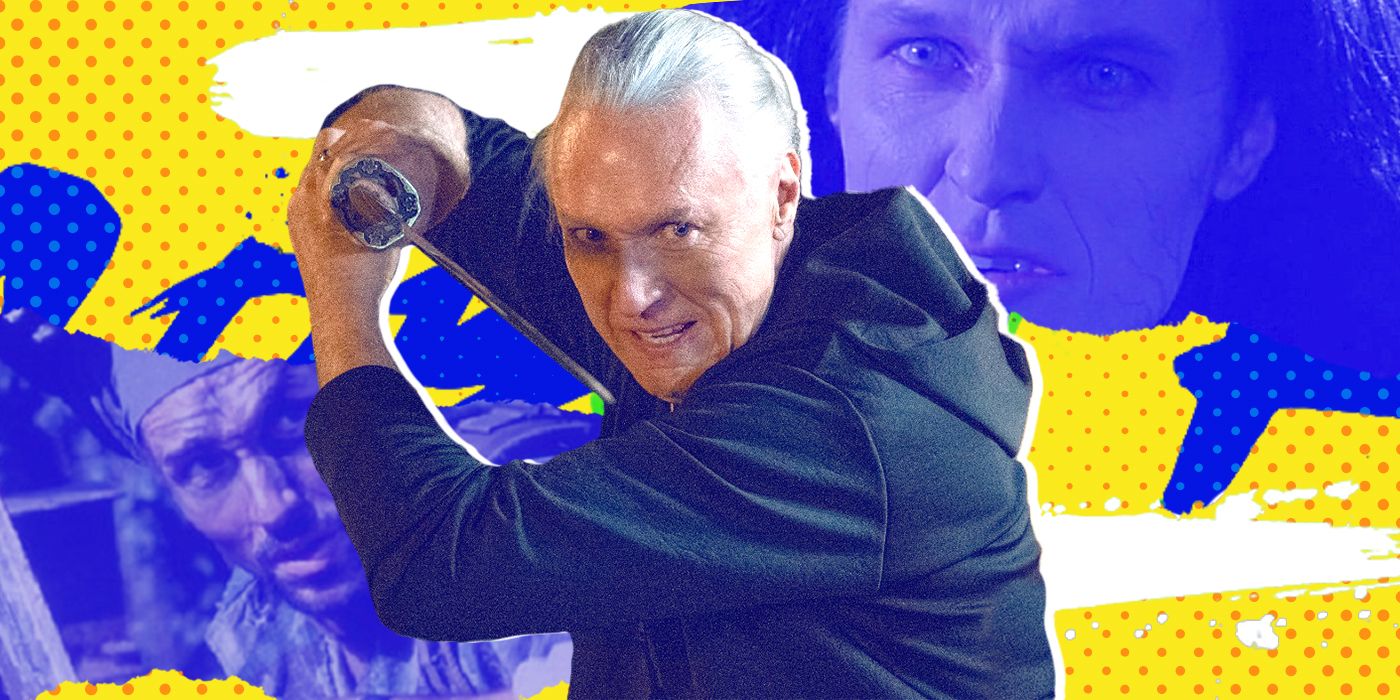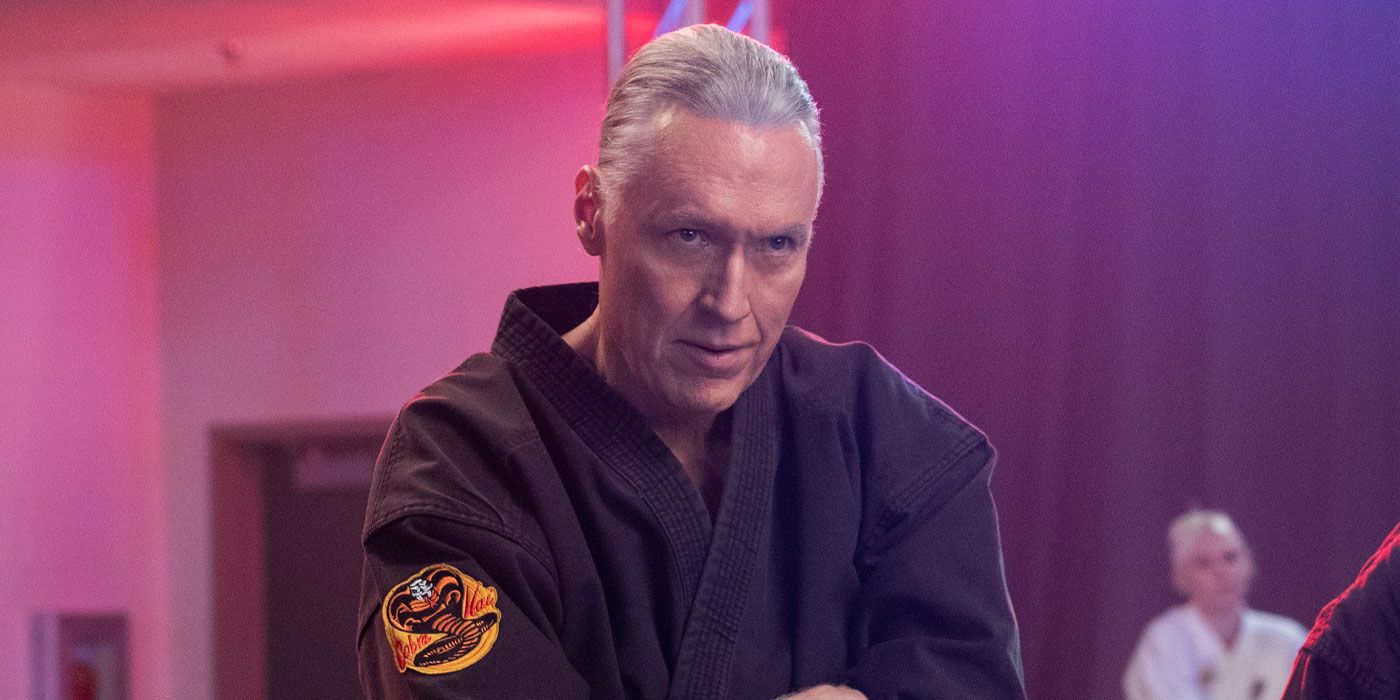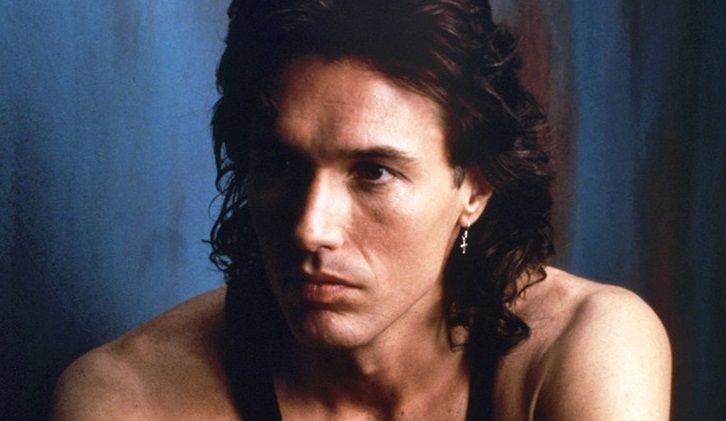Let me say these things up front: The Karate Kid Part III is not a very good movie, but Thomas Ian Griffith is great it in. Meanwhile, Cobra Kai is an absolutely fantastic TV show, and Griffith is, again, great in it. There's a reason the brain trust behind Cobra Kai have made him such an integral part of the hit Netflix series about the karate-based rivalries that consistently plague the San Fernando Valley. As Terry Silver, the slick, pony-tailed businessman and martial-arts sensei who has been a thorn in Daniel LaRusso's side since he was a kid, Griffith remains magnetic every moment he's on the screen – his wild-eyed menace perfectly matching the heightened, soap opera-ish drama playing out across the show. Karate Kid super fans – those who will tolerate Part III's glaring problems just because Griffith's overcharged personality is so entertaining to watch – eagerly anticipated his arrival in the show and have not been let down since he first joined the cast in Season 4.
That said, 32 years passed between when Griffith first tied up Silver's ponytail and when he triumphantly returned to the role. For some of that time, he worked as a writer and producer, most notably on NBC's dark fantasy show Grimm, which ran from 2011 to 2017. There were also occasional supporting appearances in notable genre films, including John Carpenter's Vampires in 1998 and the Vin Diesel-led XXX in 2002. But, for action-movie junkies, perhaps the most interesting part of Griffith's career outside The Karate Kid universe is the decade following his feature-film debut in Karate Kid III, when Griffith was positioned as the next big B-movie star in a string of low-budget action features tailor-made for video-store shelves. During those years he starred in eight such films, with titles like Kill Fee and Hollow Point. He also has a writing credit on a couple of them. In an era where video-store success could propel an action hero like Steven Seagal or Jean-Claude Van Damme into the mainstream, Griffith was never able to break through and largely moved on to creative endeavors outside of acting. But with Griffith once again stealing scene after scene on Cobra Kai, it's worth asking the question: Did Thomas Ian Griffith the action star deserve better?
Can You Stream Thomas Ian Griffith's Action Oeuvre?
Before we get into the movies themselves (which I assure you we will), let's first establish that evaluating their quality in the year 2022 isn't easy. Assuming you don't want to resort to unsavory methods for watching these movies, Griffith's action films are tough to track down. Using streaming guides on the Internet, I was only able to locate two that you are currently able to officially stream – Crackerjack (1994) and Behind Enemy Lines (1997), both of which are currently available on Freevee via Amazon Prime Video. Unfortunately neither of them is streaming at a level of quality that Griffith fans would be pleased with. Crackerjack is presented in a full-frame aspect ratio – which isn't a deal-breaker considering its VHS origins – but the image quality itself is rubbish. Every scene looks smeared, and the picture is juddery, like it wasn't uploaded at a proper frame rate. Behind Enemy Lines looks much better – it's in proper widescreen and looks decent for a low-budget action movie. Unfortunately, the version on Freevee is also an obvious TV edit, with curse words and the gnarlier squib-work excised from the movie. Kind of a bummer. Now, you can find an unedited version of Behind Enemy Lines uploaded to YouTube by a private user. Which is, of course, not strictly legal, though it's been on there for five years now, and it seems like no one has made much of a fuss over it. Though it's unedited, it was uploaded at a sub-VHS quality that's essentially unwatchable. If you have no ethical concerns about watching a user-uploaded film that YouTube hasn't taken action against, you can also find another Griffith movie, 1993's Excessive Force, which remains available on the service after being uploaded four years ago. Its upload quality is dreadful as well.
As far as legal (and sort of legal) streaming goes, those are your options right now. Nothing else is even available to rent. The rest of the films are starting to be lost to time, which is probably why there's a small but sturdy collector's market for physical copies of Griffith's films. You can find a number of preowned DVD and VHS copies for sale on eBay and Amazon (via third party sellers), though the prices can get higher than you might expect. At Amazon, DVD copies of Kill Fee, which was eventually retitled Ulterior Motives, start at $27 and run upwards of $50. Pre-owned VHS copies are cheaper but sell fairly consistently on eBay. Still, most folks don't still have a VCR sitting around, and if you want to see Griffith in his action hero heyday without spending any cash, your options are limited. Regardless, I was curious, so I watched all three of the ones currently available in an attempt to evaluate whether Griffith's Karate Kid appeal carried over into his action-hero roles. And the answer is ... kind of.
Two Things Griffith Almost Always Brings: Huge Kicks and Great Hair
There's no doubt Griffith has a compelling screen presence, and you can make the case he holds the screen at least as well as his direct-to-video action-star contemporaries. Released four years after The Karate Kid III, Excessive Force is the kind of early 90s DTV cheese that B-action movie junkies will eat up. Griffith plays a rule-breaking cop who ends up targeted by both the mafia and malevolent forces inside his own police department. The actor earned a black belt in Tae Kwon Do when he was a teenager, and the kicks he unleashes in the film are impressive ... as is the smooth jazz piano he plays for real in between the action scenes. (Cobra Kai viewers have seen Griffith play the piano as well.) The movie was released theatrically but vanished without a trace, earning barely over a million dollars at the box office. Though no one would mistake Excessive Force for a great film, it is a fun watch, not just for Griffith (who is playing to all his strengths here), but also for its supporting cast, which is loaded with genre favorites like James Earl Jones, Lance Henriksen, and Tony Todd.
Less fun is Crackerjack, which came a year later and has Griffith playing a rule-breaking cop (hmm, sounds familiar) who doesn't really care if he lives or dies but ends up fighting for his life at a secluded mountain resort when terrorists show up attempting to steal millions of dollars in diamonds. So it's a ripoff of both Lethal Weapon and Die Hard with Griffith playing Martin Riggs positioned as John McClane. But the script is abysmal, and there's no nuance to Griffith's character. He's just an unhinged psychopath with a badge who we're supposed to root for because that's the template. Griffith continues bringing his brand of manic energy to the role, but it feels ill-fitting here and fails to elevate the awful material he's given to work with. At least, like with Excessive Force, he does have great hair in Crackerjack, which can never be completely discounted in Griffith's case.
Behind Enemy Lines came four years later, toward the end of Griffith's action-hero run. Technically, it's a better movie than Crackerjack, and the Missing in Action clone offers a few low-budget thrills. But it also feels overly generic, with Griffith dialing it down several notches to play a more relatable hero – a CIA agent who botches a mission in Vietnam and has to return to the hostile country to save his imprisoned partner and retrieve stolen nuclear triggers. The Terry Silver-esque energy is disappointingly missing, as is the wild mane of hair, which has been cut short and is paired with an extremely 90s goatee that looks like it was borrowed from Ben Affleck's Chasing Amy character.
Ultimately, I just don't think Griffith could find a vehicle to match his outsized personality that could send him to the next level. The more of a "regular guy" he plays, the less fun it is to watch him. But if you fully unleash him in a film that's otherwise mundane, his performances become tonal liabilities. It's also possible that Griffith's Cheshire grin and intense stare were always better suited for villainous roles than heroic ones, but even in that regard, post-Karate Kid III, he was often let down by the material. In Vampires, for example, he's mostly just cutting vampiric poses under one too many layers of white face makeup while getting barely any dialogue (which is criminal, considering that great theatrical voice of his). So instead of looking back and bemoaning what went wrong, maybe we should just be happy with what eventually went right. Namely, that three decades later, Griffith was able to return to the role that always suited him best – that of a colorfully psychotic sensei irrationally obsessed with terrorizing the valley's karate-crazed teens.



